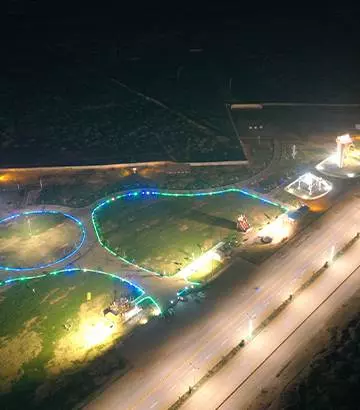We figured you, like us, might be fascinated by hot air balloon installation services and want to learn more about them in the who we are section. Of course, the best way to do this is to personally experience the joys of ballooning!
Seeing the science in action and having our pilots answer any questions you have while truly floating in the air for a once-in-a-lifetime experience is by far our favorite way to learn how hot air balloons function.
WHAT IS A HOT AIR BALLOON?
A hot air balloon is a one-of-a-kind flying device that operates on the principle that hot air rises. A hot air balloon might be one of two types. Both were created in the late 1800s and are still widely used today.
WHERE DO HOT AIR BALLOONS GO WHEN THEY FLY?
To gain lift, the ‘Montgolfier’ kind employs fire to heat the air inside the balloon. The next form is a hybrid balloon, which uses heated air in the same way as a regular balloon but also contains a compartment at the top filled with helium or hydrogen gas. A pure gas balloon, which does not require heated air and can only be controlled by dropping ballast or venting the gas, is the third type.
Many long-distance ballooning records have been set with hybrid and gas balloons, which need less fuel to fly aloft for longer periods.
WHAT DOES A HOT AIR BALLOON CONTAIN?
The following items make up a hot air balloon installation service:
Envelopes or Balloons
The balloon, sometimes known as an ‘envelope,’ is a fabric bag constructed of durable, light nylon with a mouth opening at one end. Before a flight, the envelope is put out on the ground and partially inflated with cold air from high-powered blowers before being heated with burners to provide the necessary lift.
Passenger-carrying balloons range in size from 77,000 cubic feet (referred to as a ’77’) to 600,000 cubic feet (referred to as a ‘600’). Our ‘400’ Virgin balloon, which stands over 120ft tall once inflated, is the largest passenger balloon.
Although most envelopes have the same ‘inverted tear drop’ shape as ours, several well-known brands have special shape’ hot air balloons for advertising purposes. Most balloons include vents on the top and sides, allowing the pilot to release air or rotate the balloon by tugging specific ropes as needed.
Baskets made of hot air balloons
The passenger-carrying balloon basket is linked to the envelope’s bottom by exceptionally strong metal cables. The baskets have strengthened steel frames and are covered in traditional woven wicker that is light, sturdy, and long-lasting.
Balloon baskets range in size from two to twenty-four persons. Our hot air balloons have a capacity of 10 to 16 passengers and are about the size of a large conference table. Minimum and maximum loading capacity for balloons have been established.
Large balloon baskets are normally rectangular and divided into comfortable compartments for three or four persons, providing a spectacular view for everybody. Smooth leather covers the surfaces, and foot openings in the basket’s side allow passengers to climb in and out. Many of our hot air balloon baskets come equipped with bench seats that can be used for landing.
Burners for Hot Air Balloons
The burner functions as the balloon’s ‘engine.’ It’s attached to a metal frame that’s attached above the basket and under the envelope’s mouth. The burner burns liquid propane from pressurized gas tanks by mixing it with oxygen. The pilot activates a small valve, which ignites the burner and directs the flame into the balloon’s mouth, heating the air inside.
Our hot air balloon service contains two burners, one of which releases propane more slowly and is hence quieter. When flying over residential areas or livestock, this is known as the ‘whisper burner.’ Our balloons usually feature specially-fitted heat shields beneath the burners to keep things from getting too hot for you (but we still recommend a hat).
WHERE DO HOT AIR BALLOONS COME FROM?
Because hot air rises, hot air balloons work. By using the burner to heat the air within the balloon, it becomes lighter than the cooler air outside. The balloon will float upwards as if it were in the water as a result of this. Allowing the air to cool causes the balloon to eventually deflate. The altitude of the balloon is under the control of the pilots, who monitor it with various equipment. Over time, they develop extraordinary anticipating abilities and can typically regulate the descent of a balloon to within centimeters.
Taking Control of a Hot Air Balloon
Because balloons cannot be guided in the traditional sense, they travel in the direction of the wind, which varies depending on altitude. Pilots use this intelligently to change direction by turning to go up or allowing the air to cool to go down, and catching different air streams at various heights.
Pilots can use twisting vents in the balloon’s side to rotate it 360 degrees for a full panoramic view and to make the basket’s broad side lead for landing.
Getting out of a Hot Air Balloon
Planes and helicopters land in predetermined spots, whereas hot air balloons do not. They can’t be guided in the same way (which is why it’s always a thrill!). The balloon is brought to land by the pilots after about an hour in the air on a passenger ride, when they see a safe open spot, usually in the countryside.
All passengers are asked to crouch down in the seated landing posture by the pilot (knees bent, back facing in the direction of travel, and holding ropes provided). The pilot opens the vent at the top of the balloon as the balloon approaches the ground, allowing the heated air to escape.
When the basket hits the ground, there is sometimes a bump or a side, and the basket can tilt over slightly. This is very typical and safe. Balloons have been landing this way for almost two centuries, and modern balloon baskets are made for it. Most people love the excitement after a peaceful hour or so among the clouds.
Other Key Services
- Project Consulting.
- Turn key adventure park management.
- Adventure park architecture and engineering drawings.
- Staff training and certification courses.
- Importing, private labeling and building solutions.
- Adventure park marketing and management solutions







